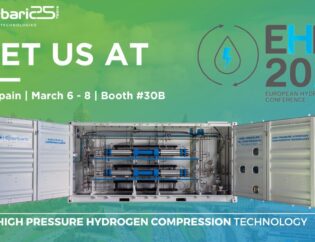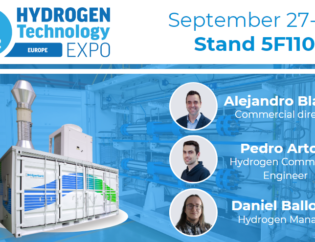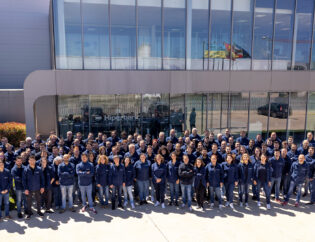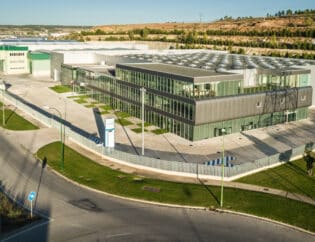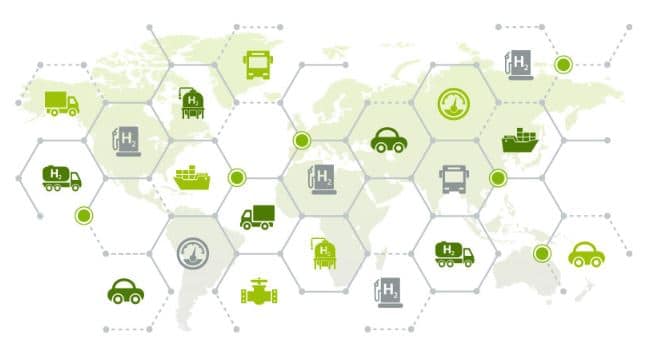

The circumstances in which global society has been moving for just over a year are calling for the mobilization of various forces to overcome the numerous crises that the current model of civilization must overcome if it wants to achieve its survival. Health crisis, climate crisis, energy crisis, etc. All of them have come together, almost capriciously, in our time. And we must do our part. The role Hiperbaric plays in this great opportunity is the conversion of the energy model, betting on the hydrogen economy as a substitute for the current model based on the extraction and burning hydrocarbons.
Civilization and energy
The human being is vulnerable. As a being, an isolated man has little hope of survival, either due to lack of food or lack of water. In his interaction with nature, broken the first isolation, a man cannot easily go ahead either. It will face other animals, meteorology, terrain… If a human being associates with other human beings, forming a community, the chances of survival and thriving are already acceptable. The degree of sophistication with which this community is able to relate to nature will determine the extent of community prosperity and also the time in which the community survives.
 Time is a key element. History gives us examples of advanced societies, or civilizations, that present their cycle of nucleation, rise, and decline. The permanence in time of these civilizations depends on whether or not they are capable of solving key situations. In his book The Hydrogen Economy, Jeremy Rifkin [1] uses the energy perspective to explain the fall of the Western Roman Empire, understood not as a specific event, but as a long process characterized by an increasing lack of energy resources that led to the final dislocation of the Western Empire. The history of other empires, especially the European colonial empires, is characterized by disputes over access to and management of different resources. This statement is certainly risky, since you can find cases of conflicts not led by energy disputes. And although there can always be nuances, there is an indisputable maxim, and that is that a civilization must be able to supply itself with energy to prevail. Napoleon understood it this way in his statement: “an army marches on its stomach”.
Time is a key element. History gives us examples of advanced societies, or civilizations, that present their cycle of nucleation, rise, and decline. The permanence in time of these civilizations depends on whether or not they are capable of solving key situations. In his book The Hydrogen Economy, Jeremy Rifkin [1] uses the energy perspective to explain the fall of the Western Roman Empire, understood not as a specific event, but as a long process characterized by an increasing lack of energy resources that led to the final dislocation of the Western Empire. The history of other empires, especially the European colonial empires, is characterized by disputes over access to and management of different resources. This statement is certainly risky, since you can find cases of conflicts not led by energy disputes. And although there can always be nuances, there is an indisputable maxim, and that is that a civilization must be able to supply itself with energy to prevail. Napoleon understood it this way in his statement: “an army marches on its stomach”.
Different fuels have been used throughout history to maintain the societies of the moment. Wood was key to providing warmth and materials in Roman and European medieval societies. This element was replaced by coal, when the technology available at the time facilitated its extraction, transport and use. Later came oil, whose use is not limited to being a source of fuels, but also to generate polymeric materials and also to produce chemical components such as pesticides. The latter allow us today to achieve that our crops yield a level of performance never imagined.
These energy resources are limited. Wood is obtained from tree logging, and cyclical use can only be established if the rate of logging equals the rate of consumption. Coal and oil are the product of millions of years of high-pressure, high-temperature treatment inside the earth. Posing a cyclical use of these elements is not practical. The fact that there is limited availability of resources also limits the survival of the society that uses them. Maintaining the functioning of society requires the consumption of these resources, and therefore when they run out, society will also stop.
This approach is not very encouraging, especially when there is a question that does not have a clear answer: how many resources do we have? We do not know how much oil and how much coal is left in the earth, but their availability in nature is certainly limited. Furthermore, our society requires more and more. The world’s population continues to grow, and the general standard of living of society is also continuously increasing. In short, we require more and more energy, but at the same time we are running out of resources. The confluence of these two facts defines our current crisis. It is necessary to change our society, and Hiperbaric’s commitment is to achieve this by changing the energy model.
The energy transition to the hydrogen economy
The technological news that we can find these months often present topics related to the use of hydrogen as an alternative to current fuels. The governments of countries such as Japan, the United States and the member countries of the European Union have also shown great interest in converting their energy economies to hydrogen. For example, Europe wants to complete its decarbonisation before 2050. However, it would be innocent to think that this interest and hydrogen technology has arisen spontaneously. Specifically, it is the third time that the world has shown this interest.
The first time was when in the 1970s the OPEC countries came together to raise the price of oil. Seeing their economy and social model in danger, countries such as Germany and the United Kingdom encouraged their universities and technology centers to intensify the use of renewable energies to increase the available power, and in turn also develop hydrogen technology to store energy surpluses produced by renewable power plants. When the price of oil fell again, this interest lost steam.
The second time the hydrogen economy saw its importance re-emerge was at the end of the 20th century. On this occasion, the general concern about the increase in the average temperature of the planet and the publication of studies that directly related the increase in this temperature with the carbon dioxide emissions produced by human activity reactivated the efforts of Western countries to carry out the energy transition to hydrogen [2].
On this third occasion, a series of crises have converged at the same time: the health crisis caused by the expansion of the SARS-COV-2 virus, the general loss of confidence of Western societies in their governments, the economic decline of countries that have not been able to manage coexistence with the virus and again the energy crisis characterized by having reached the dreaded peak of production [3].
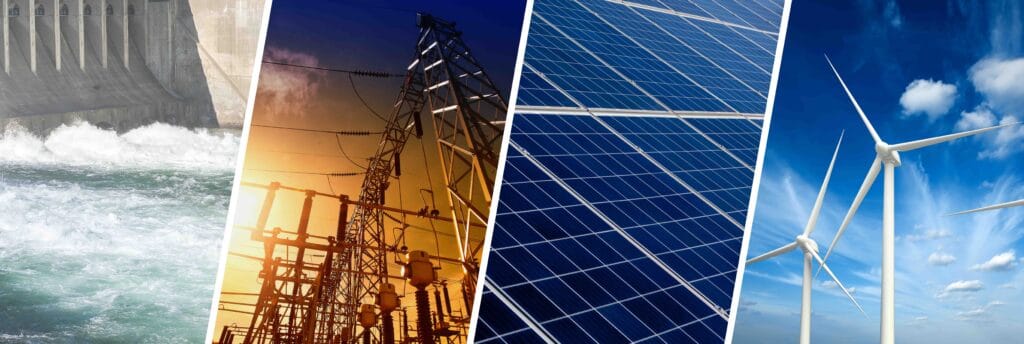
The circular hydrogen economy
The first characteristic of the hydrogen economy is that it can be established as a cyclical process. Unlike coal and oil, whose timeline can be summarized as extracting, processing and consuming, the hydrogen economy uses this substance as an energy transfer vector. Renewable means of production use surplus energy to separate water into hydrogen and oxygen. Hydrogen is transported, or stored, to be used again in a fuel cell to return that energy when it is demanded. The final material product is zero, and the only effect is the emission of heat due to the inefficiencies of each process.
If we move up looking for the origin of this energy, we reach the sun. The sun emits radiation that the earth receives. This heat produces atmospheric alterations that lead to the movement of air masses and the heating of water that causes rain in the highlands. Both effects can be harnessed as wind energy and hydraulic energy. Photovoltaic panels can also be used to transform sunlight into electricity through the photoelectric effect.
Under this approach, this energy model could also be considered as non-renewable, since at some point the sun will exhaust its fuel and we will not be able to take advantage of it anymore. However, this moment will occur at such a distant moment, that in the time scale of humanity it is situated at an infinite point.
Another advantage of this energy model is that human activity will not degrade the Earth, since it will use a small fraction of the energy that the planet continuously receives from the sun, without continuously using the energy resources stored on the planet. Naivety should not catch us unprepared, since the construction of the infrastructure, the manufacture of the mills, electrolysers, solar panels, etc. Yes, it will require materials stored on the planet, and therefore a part of the degradation of the planet will continue for a while, until recycling technology allows this degradation to be minimized. And of course, being a model without material emissions, known problems such as the emission of greenhouse gases will be neutralized. However, hydrogen has a disadvantage compared to other fuels. At atmospheric pressure, hydrogen has a very low density and therefore it is necessary to compress it to make its transport more efficient.
Need to compress hydrogen.
Hydrogen, despite having the highest energy per unit mass of known fuels, has the disadvantage of being a very little dense compound. The lower calorific value of hydrogen is 120 MJ / kg. In comparison, the lower calorific value of gasoline is average, 44.3 MJ / kg.
The density of hydrogen, however, at atmospheric pressure, is about 0.081 kg / m3. This is approximately thirteen times less dense than air.
The fuels that we normally use in vehicles, gasoline or diesel, come in liquid form. Its energy density relative to volume is approximately 30 MJ / l. If we compare this value with the energy density relative to the volume of hydrogen, at atmospheric pressure and 25 ºC, it is 0.010 MJ / l. This is 3000 times less!
In this situation, our first objective would be to transport the hydrogen in cars under more favorable density conditions. We are presented with two options: either transport liquefied hydrogen, or transport hydrogen under pressure.
Hydrogen liquefaction is a costly process both in facilities and in energy, as the efficiency is currently scratching at 70% [4]. Besides, its storage has a cost in cryogenic systems that fail to suppress the evaporation effect, and gradually a constant amount of hydrogen is lost.
If hydrogen is transported at 700 bar, the energy density that is reached is 4.6 MJ / liter. This is already an amount, although less than that of fossil fuels, acceptable. And with new material technologies, it could be transported at 900 bar, which would yield an energy density of 5.5 MJ / liter.
Therefore, if we want our cars to replace their current source of energy with hydrogen, it is essential that it be compressed so that technologies can compete. There is still ground to bring both fuels closer together, improving, for example, the efficiency of fuel cells, lightening vehicles…
Compressing hydrogen, as occurs when compressing other non-liquid substances, requires a balanced design that is capable on the one hand of applying work (compressing) on the substance, and at the same time extracting heat at an adequate rate that maintains the hydrogen at a suitable temperature and safe to work with. To achieve this, there are compressors on the market that carry out the pressure rise in several stages, applying the compression-refrigeration process in series. Without proper design and technologies, this multistage compression process can make the process more expensive, or at least disadvantageous compared to someone who can produce compressors with fewer stages, but just as efficient.
Hiperbaric, thanks to its knowledge and experience acquired during its more than 20 years of work in the field of high pressure, recognizes the opportunity to bet on the transport of compressed hydrogen. In addition to its expertise in HPP technology, the introduction to HIP manufacturing technology, which combines high-pressure and high-temperature argon handling, has been key in designing a compressor with a cooling capacity superior to that of other compressors.
Hiperbaric recently received the award of the sale of its first hydrogen compressor, designed to serve hydrogen up to 900 bar, to be stored in high-volume systems that will then serve that hydrogen to cars that will work up to 700 bar. The flow of this compressor will be 12 kg / hour minimum, being the average of 30 kg / hour. This would allow to serve 13 vehicles (with a 60-liter tank) per hour. The immediate expectation is to serve ever greater mass flows, provided that society embraces this new technology for its particular use in its automobiles.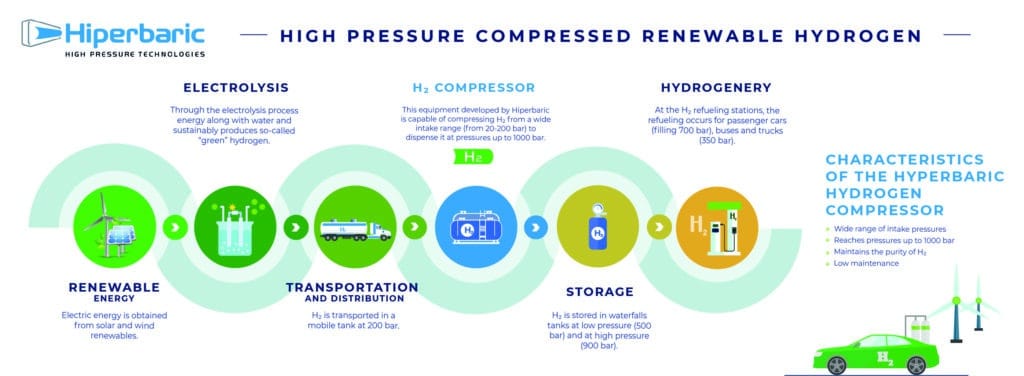
Hiperbaric recently received the award of the sale of its first hydrogen compressor, designed to serve hydrogen up to 900 bar, to be stored in high-volume systems that will then serve that hydrogen to cars that will work up to 700 bar. The flow of this compressor will be 12 kg / hour minimum, being the average of 30 kg / hour. This would allow to serve 13 vehicles (with a 60-liter tank) per hour. The immediate expectation is to serve ever greater mass flows, provided that society embraces this new technology for its particular use in its automobiles.
The challenges and uncertainties for the future.
 It is ironic that despite the great technological advances that we have achieved at this point in history, we have not yet shed our dependence on fossil fuels. Furthermore, that our main way of extracting energy from these fuels is by burning them, just as our ancestors did in caves or in their primitive constructions.
It is ironic that despite the great technological advances that we have achieved at this point in history, we have not yet shed our dependence on fossil fuels. Furthermore, that our main way of extracting energy from these fuels is by burning them, just as our ancestors did in caves or in their primitive constructions.
Big data servers, medical technology, aviation … depend on the burning of fuel. If we do not overcome this energy crisis, our civilization and social cohesion will collapse, and finally we will regress to that same point where it all began: burning fuel.
In the Foundation’s collection, where Asimov describes the fall and recovery of a galactic human empire, primitive societies that still used coal and fossil fuels for their maintenance are described with some condescension. In 1964, the astrophysicist Nikolai Kardashov defined three levels of civilization, based on the power they could take advantage of from the environment. Level I was defined as the civilization that was capable of harnessing all the energy available on its planet. It is evident that our civilization, and its current energy model, would not even enter this first level, since we use the energy reserves that have taken millions of years to form, and our renewable energy power barely scratches a first percentage of the energy received by the planet.
Therefore, our first challenge is to make the circular energy model viable, the active use of the energy received by the planet and minimize the degradation of the planet and its nature caused by human activity.
It is up to us to follow the sun, take advantage of its energy and share it with the rest of the planet, or in our pride to maintain our flight, overflowing with our being and knowing that we are heirs of the sun, the moon and the earth. Only for our chariot to fall like Phaethon did. We’re warned.
Bibliography
[1] J. Rifkin, La economía del hidrógeno: la creación de la red energética mundial y la redistribución del poder en la tierra. Paidós, 2002.
[2] S. Davídsdóttir, «Iceland moves naturally to a hydrogen economy», the Guardian, jul. 18, 2001. http://www.theguardian.com/society/2001/jul/18/guardiansocietysupplement15 (accedido abr. 18, 2021).
[3] «Shell Claims It Reached Peak Oil Production in 2019», EcoWatch, feb. 11, 2021. https://www.ecowatch.com/shell-oil-production-peak-2650478989.html (accedido abr. 04, 2021).
[4] Y. E. Yuksel, M. Ozturk, y I. Dincer, «Analysis and assessment of a novel hydrogen liquefaction process», International Journal of Hydrogen Energy, vol. 42, n.o 16, pp. 11429-11438, 2017, doi: https://doi.org/10.1016/j.ijhydene.2017.03.064.


